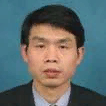
Liantang Lou
Work place: School of Science, “Key Laboratory of Intelligent Robot of Hubei Province”, Wuhan Institute of Technology (WIT), Wuhan, China, 430073
E-mail: louliantang@163.com
Website:
Research Interests: Image Compression, Image Manipulation, Image Processing
Biography
Liantang Lou, who was born in Macheng, Hubei, China in October 1966, received a Ph.D. in Pattern Recognition and Artificial Intelligence from Huazhong University of Science and Technology (HUST), Wuhan, a M.S. in Probability Statistics from Huazhong Normal University, Wuhan, and a B.S. in Mathematics from Hubei Normal University, Huangshi, in 2005, 1991 and 1989 respectively in China. Since 1991 he has been a member of School of Science, at Wuhan Institute of Technology, Wuhan, China. Since 2006, he has been a PROFESSOR. He published more than 30 academic papers on the journals and conferences. His research interests include image processing, medical imaging, computer vision and route planning. His current research interest is image analysis based on Schrödinger Transform of Image that is first proposed and investigated by him.
Author Articles
Common Carotid Artery Lumen Segmentation in B-mode Ultrasound Transverse View Images
By Xin Yang Mingyue Ding Liantang Lou Ming Yuchi Wu Qiu Yue Sun
DOI: https://doi.org/10.5815/ijigsp.2011.05.03, Pub. Date: 8 Aug. 2011
To evaluate atherosclerosis, common carotid artery (CCA) lumen segmentation requires outlining the intima contour on transverse view of B-mode ultrasound images. The lumen contours are automatically segmented using a morphology method in this paper. The proposed method is based on self-adaptive histogram equalization, non-linear filtering, Canny edge detector and morphology methods. Experiments demonstrated that the merit (FOM) value of lumen segmentation is 0.705. The comparison between proposed method and manual contours on 180 transverse images of the CCA showed a mean absolute error of 0.47±0.13 mm and mean max distance of 2.08±0.63 mm respectively. These results compare favorably with a clinical need for reducing use variability.
[...] Read more.Other Articles
Subscribe to receive issue release notifications and newsletters from MECS Press journals